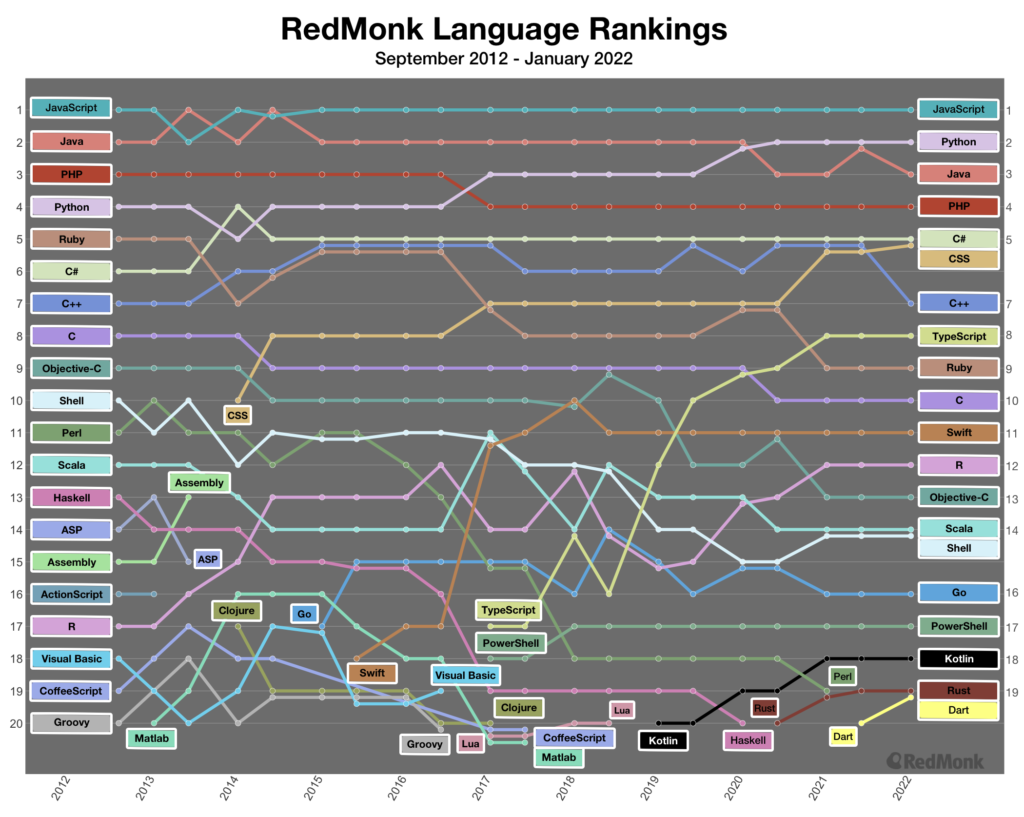Which programming languages are on the rise? If you have an idea of that, you can decide which languages to learn—and which to potentially deprioritize.
A language’s long-term growth (or decline) is usually a pretty good indicator of how it’ll fare over the next few years. Analyst firm RedMonk regularly updates its long-term rankings of the world’s top programming languages. Here’s its latest:

In order to monitor languages’ uptake, RedMonk analyzes GitHub pull requests and Stack Overflow discussion (there’s a lengthy description of their methodology on their website). The firm also acknowledges an inherent advantage for well-established languages in a breakdown like this: “While rates of growth will be fastest for new projects with a smaller base, from a cumulative perspective new language entrants are behind from the day they are released. Displacing the most popular languages is a significant and uphill battle.”
Assuming the past is prologue, many of the up-and-coming languages here will continue to rise over the next few years, including:
Swift: This one seems a given, considering Apple’s full-throated marketing push behind it. Launched as a replacement language for Objective-C, the decades-old warhorse for building macOS and iOS apps, Swift’s ranking has leveled off in recent years—but the constant addition of new features could spark its growth again. In any case, so long as people continue to build software for the Apple ecosystem, Swift isn’t going anywhere.
Kotlin: Since Google declared it a “first class” programming language for Android development, Kotlin has boomed in popularity. It’s regularly one of the most-loved languages on Stack Overflow’s annual Developer Survey, and was highlighted in HackerRank’s annual Developer Skills Report. With that kind of love and support behind it, it’s hard to see how Kotlin won’t keep growing.
TypeScript: Technically a superset of JavaScript, TypeScript has attracted a good deal of attention from developers due to its speed as well as its interoperability with existing JavaScript codebases. It’s exploded up the RedMonk ranks over the past three years, and seems unlikely to slow down anytime soon.
R: A highly specialized language for data science, R seems to have fended off Python’s muscular attempt to seize data scientists’ time and attention. Fans of the language argue that R is so specialized and useful (especially in research and academic contexts) that it’ll be difficult to displace it anytime soon. They could be right.
Dart: Developed by Google as a general-purpose programming language (and as a JavaScript replacement), Dart has seen its RedMonk rank spike in the past year. While little-used compared to the “big languages” such as JavaScript and Python, Dart could emerge as a serious contender for developers’ attention in coming years. Make sure to keep an eye on it.



